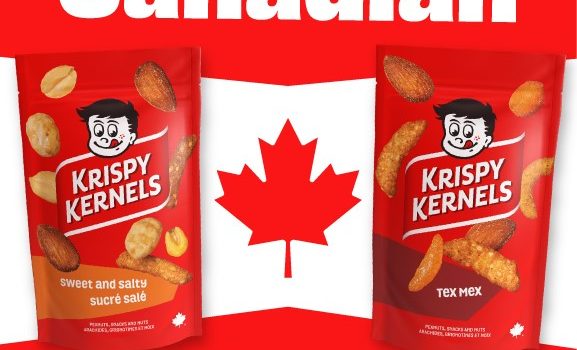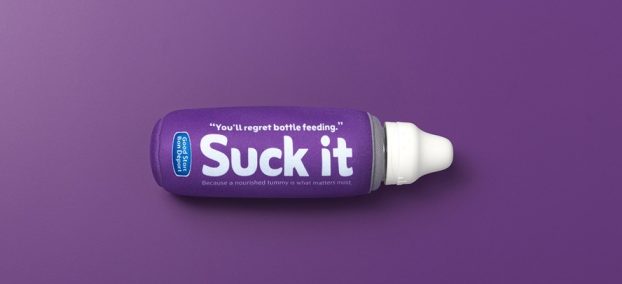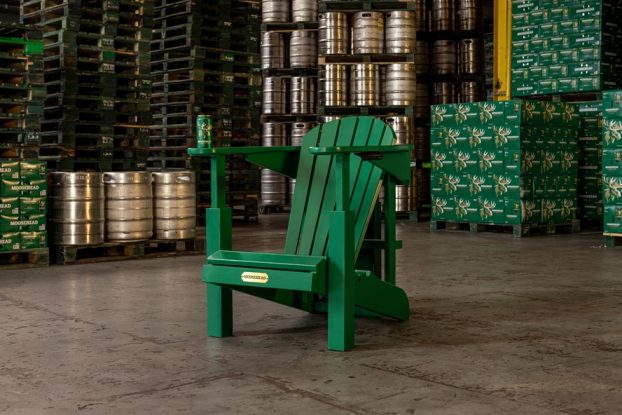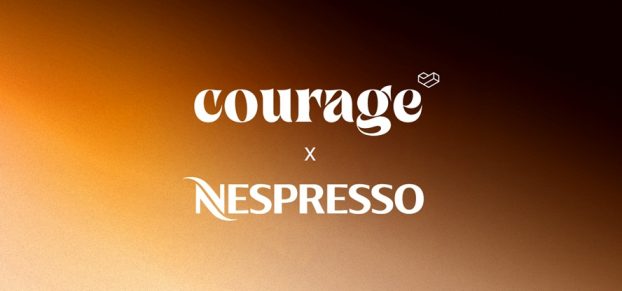The beer war between Labatt and Molson is ongoing, but it looks like the next battle will be in Quebec.
Molson Breweries has come roaring out of the gate in that province with a repositioning of several key brands, plenty of new advertising and promotional activity, and a few new products tossed in for good measure – including a line extension to the most popular brand in the province.
‘This is the hardest we’ve ever hit,’ says John Bailey, Molson’s VP of marketing for Quebec. ‘We’re reaching more aggressively for share increases.’ The brewery’s strategy this summer, he says, is not only to sell more beer, but also to begin strengthening its portfolio over the long term.
The Quebec market has always been important, of course. It’s second only to Ontario in terms of sheer volume consumed and actually comes out higher on a per capita basis, with about 72 litres of the stuff being consumed per person each month last year, as compared to Ontario’s 58 litres a month.
But it’s also a unique marketplace – one that requires absolute vigilance to stay ahead, according to Michael Van Aelst, consumer products analyst for CIBC World Markets in Montreal. ‘It’s a large, competitive market and one brewer can’t sit back and rest on its laurels or it will lose share,’ he says. He adds that his previous estimates put Molson in the top position in the market with about a 49% market share.
Not every analyst agrees that Molson has managed to keep a strong hold on its top position. ‘Molson is getting beat up a little in Quebec,’ says Michael Palmer, analyst at Veritas Investment Research in Toronto. He says that its top brand, Molson Special Dry hasn’t been performing as well as it has in the past, and the brewer has been lax when it comes to supporting its other brands.
‘The stuff that they own is either hurting or they’ve stopped promoting it,’ he says. Not the best strategy to take in a market whose unique distribution framework – beer is sold in corner stores and supermarkets – makes for what Palmer calls ‘guerrilla warfare’ over shelf space.
Palmer goes so far as to say that this summer’s increased activities are all about stemming the tide of share loss. He says, for example, that he believes the brewer’s signature brand is down half a point in share and ‘that’s gotta’ hurt.’
Indeed Molson president and CEO Dan O’Neill probably felt rather pained at a shareholders meeting in late June when, speaking of the company’s nationwide slide over the past 10 years, he announced that ‘We’ve stopped the share declines but we’re not happy.’ At that meeting O’Neill said Molson’s efforts would focus on increasing market share in Canada, calling share ‘the biggest area that I think we have to improve.’
Denis Brault, senior brand manager for Labatt Breweries’ Blue family, says that according to his numbers, Blue has in fact overtaken Special Dry in terms of share in Quebec over the past two years. ‘I’m not sure if Molson has the same opinion but we’re pretty sure we’re in first place,’ he says.
Molson’s Bailey counters that Special Dry’s share is not down. But he admits the brand didn’t enjoy the same growth last year as it has previously.
Whatever the actual share of belly, Special Dry is pulling out all the stops in Quebec this year. Molson has repositioned the brand with a new ‘Jamais Ordinaire’ (Never Ordinary) tag that Bailey says takes the brand back to its basics. ‘After much repositioning research, the strategy is to take it back to the core equity of the brand – what made it different in the beginning,’ he says.
Molson has also doubled its advertising to four ads this summer, compared to two last year. One of the new ads, ‘Fenêtre,’ features a young man standing on a terrace at a party. He’s trying to listen to music from inside the house, but it keeps getting muffled. It turns out that the young man’s strategy of propping open the window with a bottle of Special Dry isn’t working – the beer keeps getting swiped by party-goers inside. He solves the situation by using an empty bottle.
The ad, created by Cossette Communication-Marketing, researched very well, says Bailey. ‘It’s probably the best performing Molson Dry ad, in terms of tracking results, in over five years.’
Two more image ads on the same ‘Never Ordinary’ theme are to be launched later in the summer. The brand is also repeating its ‘Le Sons Gagnant’ promotion. Now in its ninth year, the under-the-cap promo – which awards various monetary prizes, including an expense account of $5,000 per month for a year – is a relatively simple one to plug because it’s so well known, according to Bailey.
Besides sponsoring this year’s Grand Prix in May, the brand also has two new sponsorship properties to round out the summer. The first, in July, is a world beach volleyball tournament, to be held at the city’s Jarry Park, which can hold up to 11,000 spectators. Montreal is the only Canadian city to host the event, which travels all over the world. The other added major event, in August, is the first Montreal-hosted Molson Indy.
The company is also launching a line extension in its Dry roster with Molson Smooth Dry. With a 4.5% alcohol content, Smooth Dry is being positioned as somewhere between a light beer and a regular premium beer. But it won’t play up its lower alcohol content. Light beers aren’t popular in the province, boasting only about a six share versus 17 in Ontario.
Instead, Molson will play up the new product’s taste. ‘We feel it’s going to play a good portfolio role in terms of adding some easy-drinking, socially-acceptable premium beer credentials to compete against Labatt’s portfolio,’ says Bailey.
The trend in Quebec is indeed towards what Bailey calls ‘easy-drinking’ beers. ‘If you add up all the lower bitter beers – measuring the strength of flavour – there’s been significant growth,’ says Bailey. A large percentage of beer brands that don’t carry a light label, but have lower bitterness levels, do surprisingly well in the province. For example, light-tasting American-style lagers like Milwaukee Best and Budweiser represent about a 10% share of all beer in the province, Bailey says.
The Smooth Dry ads, both TV and out-of-home, aim to introduce the brand to blue-collar heavy beer drinkers who tend to turn to U.S. brands. The first TV ad features an angry bull menacing a group of picnickers. But then the bull sees a bottle of Smooth Dry, decides not to attack, and turns to the camera to moo ‘Smoooooth.’
For those drinkers who still want an American import, the brewery is also bringing Miller Genuine Draft – another easy-drinking import – to the province later this summer. ‘[It] has done very well for Molson elsewhere in Canada,’ says Bailey.
Then there are the beer drinkers who buy the lower-priced beers. According to Bailey, this segment accounts for a healthy 23% of the market. Molson is repositioning Carling Black Label this summer to attack on this front.
Considered the post-war worker’s beer of choice in the ’50s and ’60s with a ‘Hey Mabel, Black Label’ tag, the brand was stagnant for years before its now-famous rejuvenation in the late ’80s with advertising that tapped into a then unheard of notion: that beer could be sexy and alternative. Those days of the beer’s cultish popularity – in the early ’90s it reached a 6% share – are long gone.
Now Black Label is facing another makeover that moves it back to its roots with a repositioning just above discount in terms of pricing. According to Bailey, this time around, Molson has a slightly older, 25- to 35-year-old beer drinker in mind.
The current campaign focuses on consumers who have moved on from their entry-level drinking years but still crave a little edge. ‘It’s all about trying to touch an emotional chord with a guy who has responsibilities, a job, a mortgage.’
The tag, ‘Délivrez-moi du bien,’ developed by Publicis M7, is a bold play on ‘Deliver me from evil’ from the Lord’s Prayer. One billboard, for example, features a guy shaving. His forearm is tattooed with several women’s names, each one subsequently crossed out. The only remaining tattoo is that of a motorcycle. Outdoor, print and radio ads, which broke in April, will run throughout the summer.
For now, the advertising doesn’t focus on Black Label’s lower price, although in-store and on-case communication highlight the savings. But Bailey says Molson may focus more on the price – with a play on black market imagery – when the summer weather heats up.
Black Label is also expanding its product lineup with the launch of Carling Black Label Light (4% alc./vol.) and Black Forte (6.1% alc./vol.), both in six- and 12-packs – as well as X-Forte (6.6% alc./vol.), Extrême (7% alc./vol.) and Suprême (8% alc./vol.), which will sell in 1.18 litre bottles.
Bailey says he’s hoping the new positioning will double Black Label’s 2% share, but he recognizes that the strategy must be long-term. ‘You don’t turn an old beer brand around overnight.’
Molson has orchestrated brand turnarounds in the province before. It managed to put a stop to Export’s dance with death in the late ’90s, when the brand was declining at about 0.6% per year. It hit bottom with a 6.7% share in March ’98, but has finally begun a rebound with this March’s 7.8% share, according to numbers provided by Bailey. He adds that Ex is now number two among males aged 18 to 24 who are heavy beer drinkers.
Molson’s not planning on playing around too much with Export’s successful ‘back to its roots’ strategy (with the tag ‘Today’s beer since 1903’), although it has launched its first on-pack summer promotion for the brand. The promotion features the chance to win a sailboat trip for a number of friends to several destinations.
Meanwhile, the company has introduced a new flavour to its Tornade malt cooler line with the launch of Long Island Iced Tea. A new TV ad, called ‘Grandmère,’ features an elderly but talented bartender – à la Cocktail – taken to a humorous extreme with said old lady performing a few flips on the bar for a finale. The campaign includes in-store sampling and signage.
While Labatt led the malt cooler race when it launched Boomerang four years ago, Bailey says that Tornade has overtaken its competition in Quebec. However, the malt-based cooler category is relatively small, accounting for perhaps 2% of the beer market (see ‘Quebec resists cooler fever,’ p.22, for more on coolers in Quebec).
Labatt isn’t exactly fading into the woodwork while Molson steps up its activities. Although the company’s VP of marketing for Quebec was not available to comment on Labatt’s larger strategy for responding to Molson, Brault, senior brand manager for the Blue family, was able to discuss various promotions designed to boost Labatt Blue, Blue Light and Blue Dry this summer.
First off is an on-bottle promotion for Blue, the best-selling Labatt brand in Quebec, called ‘Let the comics out.’ It features the chance to scratch and win tickets to a number of comedy shows across the province during the summer, including those at the Just for Laughs festival in Montreal. Brault says that this is the first time Blue has tied in so completely to comedians, yet it makes absolute sense. ‘We are respecting our brand essence,’ he says. ‘We love to laugh.’
The young, dynamic approach that Blue has adopted over the years is a little more focused this year, he adds. Blue will be the ‘out and about’ brand, sponsoring several festivals revolving around comedy and blues (and, of course, the Montreal Jazz festival).
Besides one TV spot (by BBDO Montreal) and regular billboards highlighting promotional activity, moving billboards will tout promos in the downtown areas of the top 10 cities in Quebec. Brault says that the response so far has been positive.
For Blue Dry, which targets entry-level drinkers with the tag ‘The Night is Young,’ the emphasis will be on wacky fun embodied by monthly Blue Moon parties at bars in cities across the province. The bars are pumped full of foam, and party-goers are greeted by mermaids, according to Brault. ‘It’s crazy, it’s fun and it’s young.’ The parties have been running since February and are proving very trendy, he says.
So much so, in fact, that the brewery has added several Blue Moon weekends to its event roster for the summer. The weekends will start with a double-decker Blue Moon bus picking up clientele at hot bars in several cities across the province and bringing them to a surprise concert (featuring local popular bands), after which the whole crowd returns to the bars for another party. These events are being promoted on radio stations across Quebec.
Moosehead finally expands into Quebec
It’s taken almost five years of battling interprovincial barriers, but Moosehead is finally going to be able to sell its beer in the second-largest market in the country.
The St. John, N.B.-based brewery sells its beer in Canada, the U.S. and overseas, but a market that is a day’s drive away has been out of the question until now, thanks to import barriers that make it next to impossible for brewers located outside the province to import their product.
The company, clearly fed up with trying to untangle all the red tape, finally decided that brewing its beer within the province is the best way to enter the lucrative market. Montreal-based Brasserie McAuslan is currently expanding its brewery so that it can brew Moosehead locally under licence, starting late this summer.
Sleeman Breweries is considering going the same route. Since ’94 when it entered the market, the Guelph, Ont.-based brewery has been paying what is essentially an import tax on every case of beer it sells in the province.
Moosehead plans to run out-of-home ads, designed by Montreal agency Armada, mid-summer through October to introduce consumers to its brand, according to Jim Eagles, VP of marketing.
While the brand identity won’t be entirely different from that in other provinces – ‘When you’ve got a moose on your label, how different can you be?’ jokes Eagles – it will have a distinct twist born out of research.
‘Moosehead symbolizes nature,’ he says. ‘Yet nature is viewed in quite a different way in Quebec than Ontario.’ For example, in Ontario nature is usually depicted as a cottage retreat, complete with loons, while Quebec residents consider it more a part of their cultural heritage, he says. ‘We needed to create advertising to relate to that.’
Eagles says that the province has a very strong microbrew industry with local players like Brasserie McAuslan, Les Brasseurs du Nord and Unibroue. While the category represents only between 8% and 10% of the overall beer market, microbrew is the fastest-growing segment by far, says Eagles. ‘Quebec is probably one of the best developed microbrewery markets in the country,’ he says.
To wit, at a shareholders meeting in late June, Molson CEO Dan O’Neill reportedly compared microbreweries to ‘mosquitoes or black flies buzzing around your head,’ adding that the brewery needed to win back share from the smaller craft brewers.
Quebec resists cooler fever
The rest of Canada’s craving for coolers has yet to reach La Belle Province, according to beer analyst Bob Scott, principal of Ascot Marketing in Toronto. ‘Coolers are very underdeveloped in Quebec,’ he says.
Quebec is actually on par with the Maritimes when it comes to cooler sales, and Ontario rings up six times as much. As to the reason why the market is so different, Scott isn’t exactly sure. ‘They haven’t caught on, for some reason.’
One theory has it that distribution is to blame. Quebecers are used to buying refreshment alcohol – beer, in other words – as conveniently as possible, in corner stores and supermarkets, where the bulk of beer is sold. Yet spirit-based coolers, which tend to attract young drinkers, are only available at the SAQ (Société des alcools du Québec). In other words, consumers might feel the extra trip isn’t worth the hassle.
But Scott’s not buying that argument. He says that Ontario residents have to make a separate trip for coolers too – and they’ve taken off in the province, to the chagrin of breweries which have lost share against brands like Smirnoff Ice and Mike’s Hard Lemonade. Whatever the reason, the breweries in Quebec aren’t complaining, says Scott. ‘That’s a very favourable position for the beer industry.’
However the situation may not be permanent. Smirnoff Ice has proven very popular in Quebec bars over the past year and the SAQ, only too aware of the potential for coolers, is heavily promoting its spirit-based offerings, according to John Bailey, Molson’s VP of marketing for Quebec. Over the past year, Molson’s Tornade malt-based cooler has been fighting for share against Labatt’s Boomerang in the province, but now he says the big battle will be the malternatives as a category against the spirit-based coolers.
Bailey explains that’s why it’s so important that Tornade come up with a new, enticing flavour every year. Labatt’s new Boomerang this year is, tellingly, VodkIce, a malt-based drink flavoured to taste like vodka-lime.























